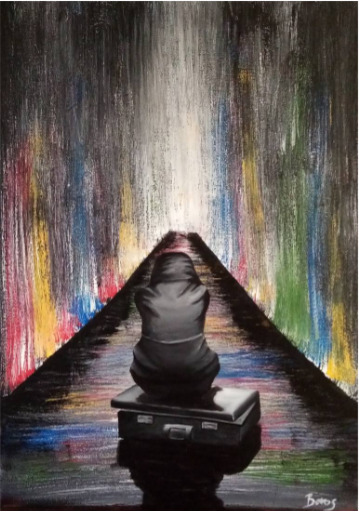#oláh
Explore tagged Tumblr posts
Text

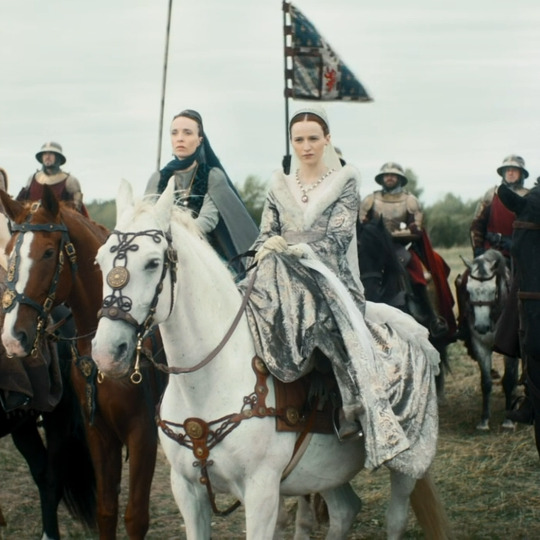
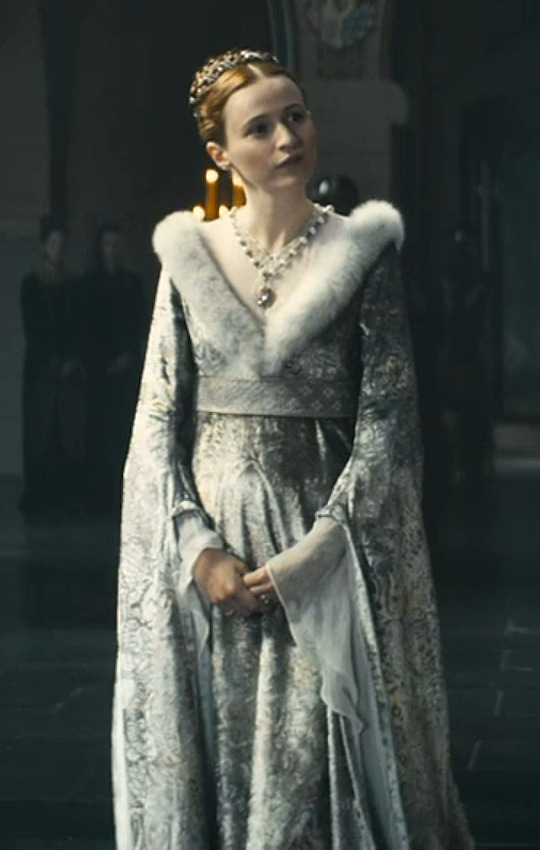
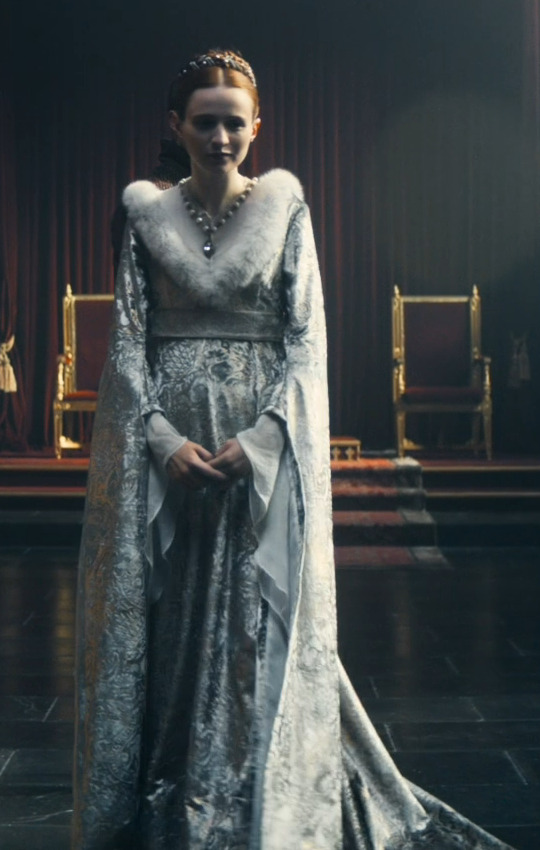
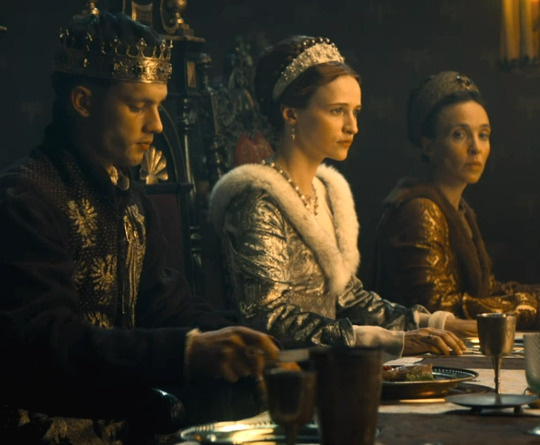
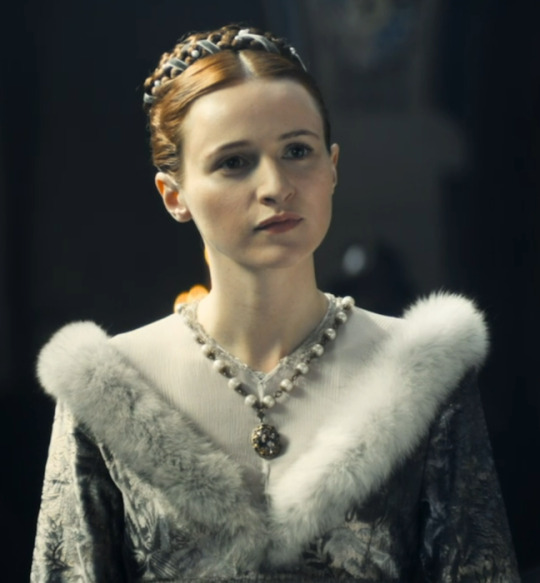
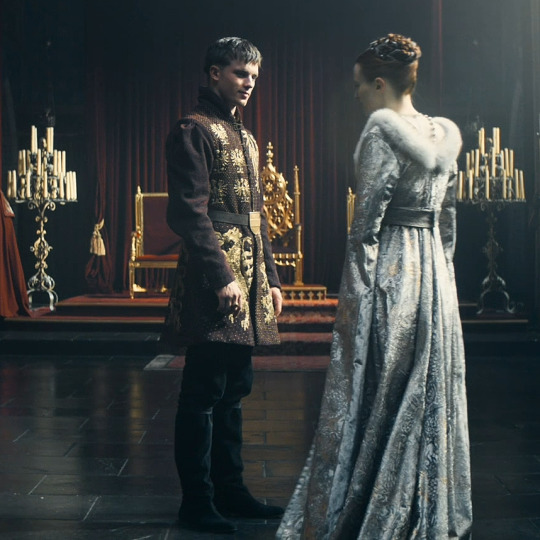
One Dress a Day Challenge
October: Silver Redux
Maximilian and Marie de Bourgogne (Maximilian: Das Spiel von Macht und Liebe) / Christa Théret as Marie of Burgundy
Marie wears this magnificent silver brocade gown when meeting Maximilian (whom she has already married by proxy) in person for the first time. As she tells him, Burgundy is the capital of cloth-making.
The historical event on which this is based took place in 1477. The costume designer for this series is Thomas Oláh.
We see Marie with three different variations of hairstyle and headdress with this gown (see below). I'm not sure about the period-authenticity of that pearl-studded tiara, but it is pretty. And at least she wears her hair up, unlike the heroines of many other historical productions.

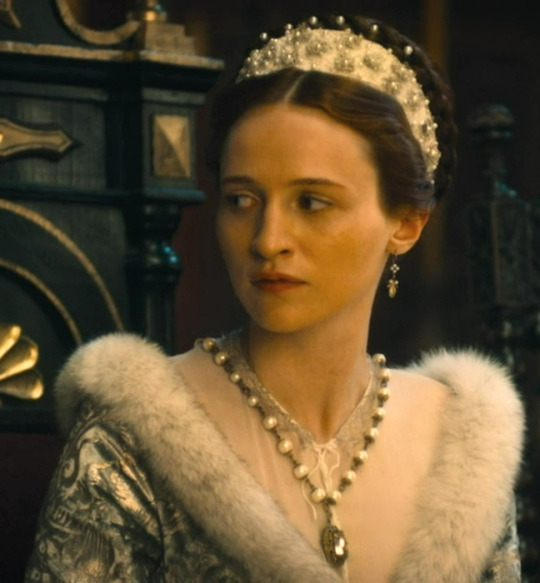
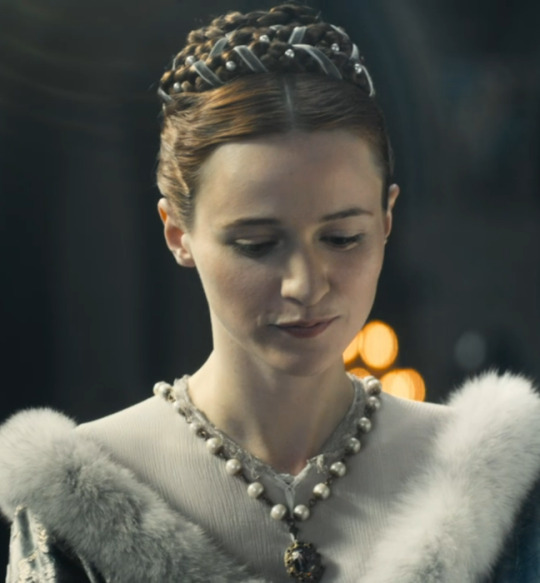
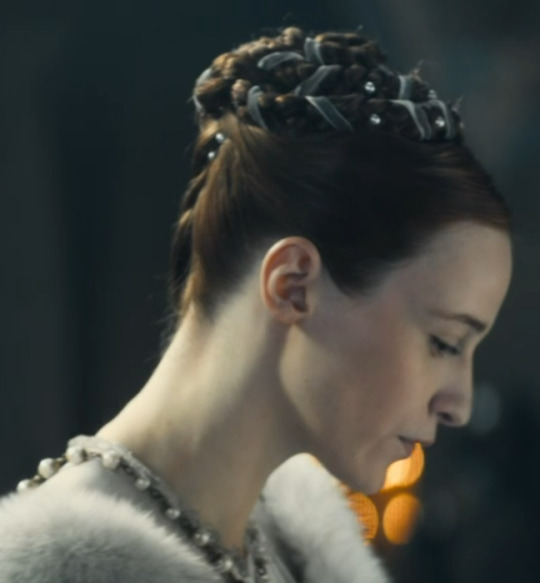
#maximilian and marie de bourgogne#Christa Théret#silver dresses#maximilian tv#silver dress#one dress a day challenge#one dress a week challenge#television costumes#tv costumes#period drama#medieval costumes#15th century costumes#Thomas Oláh#marie of burgundy#marie de bourgogne#1470s fashion#1470s style#silver redux
39 notes
·
View notes
Text

this post from my drafts is more than relevant right now
#looking like mátyás király if he slayed#people who have never seen me: i have a roundish face and piercing dyke gaze like that woman#<— whenever i feel down i look into the mirror and say im an oláh ibolya stunt double#hazel.txt
18 notes
·
View notes
Text
Az mindig is vicces lesz amikor apum valakire azt mondja, hogy "lányocska". Mármint igen apum, hozzád képest fiatalabb, de akiről beszélsz, az a 70-es években született
0 notes
Text
my sister keeps exposing me to specifically hungarian tiktok #brainrot i know about habos babos kőbányai and oláh 2es golf gusztáv it's so scary in here
8 notes
·
View notes
Text

Halmazelméleti példatár
Nobel-díjasok magyarországi gyökerekkel:
Bárány Róbert, Békésy György, Gábor Dénes, Daniel Carleton Gajdusek, Milton Friedman, Harsányi János, Herskó Ferenc, Hevesy György, Karikó Katalin, Kertész Imre, Lénárd Fülöp, Oláh György, Polányi János, Szent-Györgyi Albert, Wigner Jenő, Elie Wiesel, Richard Adolf Zsigmondy
Magyarországon született Nobel-díjasok:
Békésy György, Gábor Dénes, Harsányi János, Herskó Ferenc, Hevesy György, Karikó Katalin, Kertész Imre, Lénárd Fülöp, Oláh György, Szent-Györgyi Albert, Wigner Jenő
Magyar állampolgárként lettek Nobel-díjasok:
Karikó Katalin, Kertész Imre, Szent-Györgyi Albert
Magyarországon folytatott tevékenységük miatt kaptak Nobel-díjat:
Kertész Imre, Szent-Györgyi Albert
Magyarországon alkottak, Magyarországon haltak meg:
Kertész Imre
Hazájuk végig büszke volt rájuk, és nem próbálták meg őket elüldözni Magyarországról:
–
Forrás
44 notes
·
View notes
Text
@themousefromfantasyland @adarkrainbow @thevampiricnihal @the-blue-fairie @princesssarisa @professorlehnsherr-almashy @obufalo @soviet-supersoldier
‘Excellent visual storytelling and narration, definitely recommend this film for the archive.’
Vera Lackova
Synopsis
The story of the Cigánymesék / Romani Tales cartoon series started in 2013 at the Kecskemétfilm Studio under the direction of Ferenc Mikulás and Mária Horváth, who wanted to share Romani folk traditions and combine them with contemporary Roma cultural values. The story of the animation cartoon series contains three episodes: The Romani Woman and the Devil (2014), Kalo (2015), and Doja, the Romani Fairy (Doja a Cigánytündér, 2015).
In order to create the three animated short movies, the director cooperated with the same Romani artists who are close to their own Romani roots; Magda Szécsi a Romani writer and illustrator, Teréz Orsós, a Romani painter, József Oláh, a musician, and Erika Varga, a fashion designer. This innovation allowed the artists to represent Romani myths and oral heritage while also illustrating tradition with contemporary art through their storytelling skills, fusing drawings, paintings, and traditional music.
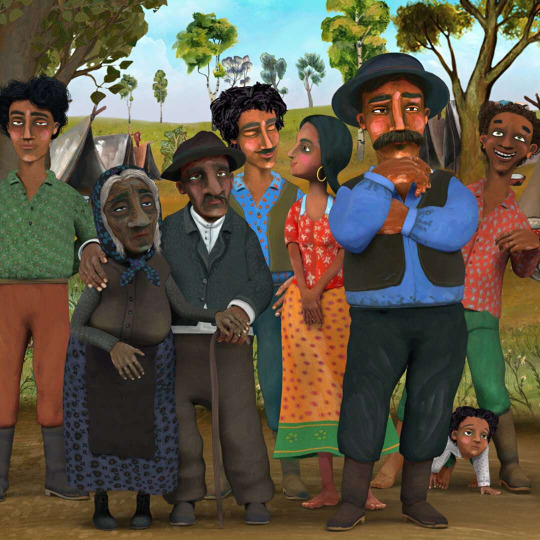
As a result of their work, the animation presents loveable and complex Romani heroes and heroines and helps to create a positive representation of Romani communities and their traditions.
Myths and fairy tales have a high relevance to Romani history. Furthermore, the Doja the Romani Fairy episode clearly illustrates the poverty and exclusion that Roma face. They are dreaming about their own land, and the fairy gracefully strolls down a rainbow to be amongst her community and to help them. Clinging to her long, jet-black hair, they fly with her to a wondrous island, where they can build the Romani land in freedom and live happily in peace. But then, one day, terrible monsters called szülláks attack the village.

The animation series is a combination of modern techniques – the director uses 2D and 3D animations – and contemporary Roma art visuals accompanying the folk tales. Teréz Orsós, a painter and graphic designer, designed the visual background for the animation. She mainly creates warm, earth-coloured genre paintings about the traditions and everyday life of Romani people. The main theme song and background music is in the traditional Roma music style, written and played by musician József Oláh, the frontman of the band Parno Graszt. In the Doja, the Romani Fairy animation episode by Magda Szécsi, we can find the ‘bitter fate’ motif of wandering when the community cannot climb on Doja’s magical long hair; instead, they remain scattered throughout the world, and it is their destiny to find one another.
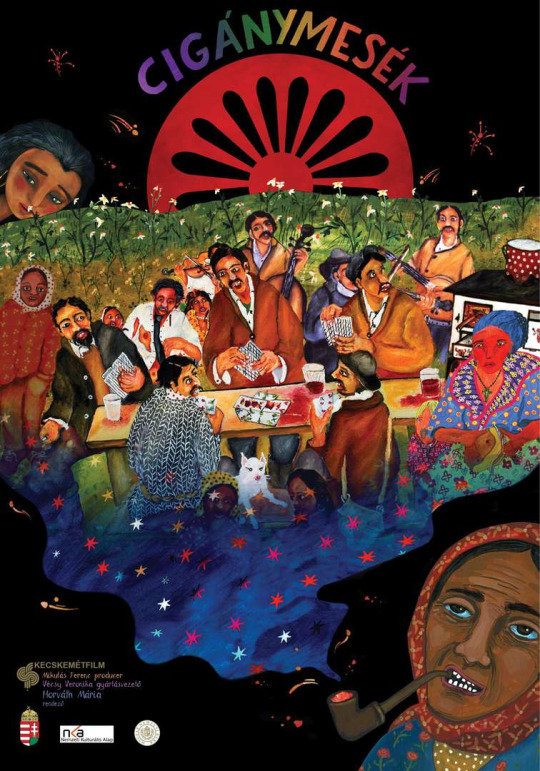
The Romani Tales series received several international and national awards: the Doja, the Romani Fairy episode received an award at the 12th Kecskemét Animation Film Festival (2015), the special prize of the Hungarian Lutheran Church Lutheran Diakonia. In Stana, Transylvania (2016) it also received the first prize at the III International Ethnographic Film Festival.
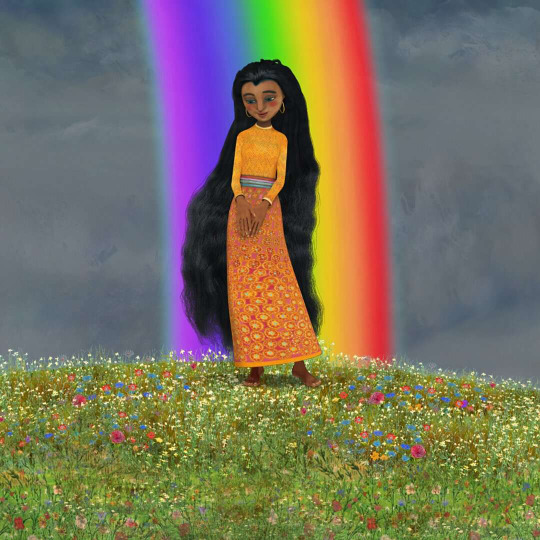
In the meantime, three new episodes from the series Romani Tales have been completed: How Was Man Created (2017), The Fiery Red Snake (2017) and The Story of the Sun and the Moon (2017).
#romani tales#romani representation#race representation#eastern european animation#folklore#folktales#fairy tales#mythology
6 notes
·
View notes
Text
Interesting Papers for Week 16, 2024
Signatures of cross-modal alignment in children’s early concepts. Aho, K., Roads, B. D., & Love, B. C. (2023). Proceedings of the National Academy of Sciences, 120(42), e2309688120.
Competing neural representations of choice shape evidence accumulation in humans. Bond, K., Rasero, J., Madan, R., Bahuguna, J., Rubin, J., & Verstynen, T. (2023). eLife, 12, e85223.
Initial conditions combine with sensory evidence to induce decision-related dynamics in premotor cortex. Boucher, P. O., Wang, T., Carceroni, L., Kane, G., Shenoy, K. V., & Chandrasekaran, C. (2023). Nature Communications, 14, 6510.
A large-scale neurocomputational model of spatial cognition integrating memory with vision. Burkhardt, M., Bergelt, J., Gönner, L., Dinkelbach, H. Ü., Beuth, F., Schwarz, A., … Hamker, F. H. (2023). Neural Networks, 167, 473–488.
Human thalamic low-frequency oscillations correlate with expected value and outcomes during reinforcement learning. Collomb-Clerc, A., Gueguen, M. C. M., Minotti, L., Kahane, P., Navarro, V., Bartolomei, F., … Bastin, J. (2023). Nature Communications, 14, 6534.
Large-scale recording of neuronal activity in freely-moving mice at cellular resolution. Das, A., Holden, S., Borovicka, J., Icardi, J., O’Niel, A., Chaklai, A., … Dana, H. (2023). Nature Communications, 14, 6399.
Top-down control of exogenous attentional selection is mediated by beta coherence in prefrontal cortex. Dubey, A., Markowitz, D. A., & Pesaran, B. (2023). Neuron, 111(20), 3321-3334.e5.
The priming effect of rewarding brain stimulation in rats depends on both the cost and strength of reward but survives blockade of D2‐like dopamine receptors. Evangelista, C., Mehrez, N., Boisvert, E. E., Brake, W. G., & Shizgal, P. (2023). European Journal of Neuroscience, 58(8), 3751–3784.
Different roles of response covariability and its attentional modulation in the sensory cortex and posterior parietal cortex. Jiang, Y., He, S., & Zhang, J. (2023). Proceedings of the National Academy of Sciences, 120(42), e2216942120.
Input-specific synaptic depression shapes temporal integration in mouse visual cortex. Li, J. Y., & Glickfeld, L. L. (2023). Neuron, 111(20), 3255-3269.e6.
Dynamic emotional states shape the episodic structure of memory. McClay, M., Sachs, M. E., & Clewett, D. (2023). Nature Communications, 14, 6533.
Trajectories through semantic spaces in schizophrenia and the relationship to ripple bursts. Nour, M. M., McNamee, D. C., Liu, Y., & Dolan, R. J. (2023). Proceedings of the National Academy of Sciences, 120(42), e2305290120.
Contribution of dorsal versus ventral hippocampus to the hierarchical modulation of goal‐directed actions in rats. Piquet, R., Faugère, A., & Parkes, S. L. (2023). European Journal of Neuroscience, 58(8), 3737–3750.
Neural dynamics underlying successful auditory short‐term memory performance. Pomper, U., Curetti, L. Z., & Chait, M. (2023). European Journal of Neuroscience, 58(8), 3859–3878.
Temporal disparity of action potentials triggered in axon initial segments and distal axons in the neocortex. Rózsa, M., Tóth, M., Oláh, G., Baka, J., Lákovics, R., Barzó, P., & Tamás, G. (2023). Science Advances, 9(41).
Working memory and attention in choice. Rustichini, A., Domenech, P., Civai, C., & DeYoung, C. G. (2023). PLOS ONE, 18(10), e0284127.
Acting on belief functions. Smith, N. J. J. (2023). Theory and Decision, 95(4), 575–621.
Thalamic nucleus reuniens coordinates prefrontal-hippocampal synchrony to suppress extinguished fear. Totty, M. S., Tuna, T., Ramanathan, K. R., Jin, J., Peters, S. E., & Maren, S. (2023). Nature Communications, 14, 6565.
Single basolateral amygdala neurons in macaques exhibit distinct connectional motifs with frontal cortex. Zeisler, Z. R., London, L., Janssen, W. G., Fredericks, J. M., Elorette, C., Fujimoto, A., … Rudebeck, P. H. (2023). Neuron, 111(20), 3307-3320.e5.
Predicting the attention of others. Ziman, K., Kimmel, S. C., Farrell, K. T., & Graziano, M. S. A. (2023). Proceedings of the National Academy of Sciences, 120(42), e2307584120.
#neuroscience#science#research#brain science#scientific publications#cognitive science#neurobiology#cognition#psychophysics#neurons#neural computation#neural networks#computational neuroscience
16 notes
·
View notes
Text
The Angel Makers of Nagyrév (Hungarian: Tiszazugi méregkeverők, "Tiszazug poison-mixers") were a group of women living in the village of Nagyrév, Hungary, who, between 1914 and 1929, poisoned to death an estimated 40–100 people.[1][2] They were supplied arsenic and encouraged to use it by a local midwife named Zsuzsanna Fazekas, wife of Gyula Fazekas, née Zsuzsanna Oláh (Fazekas Gyuláné Oláh Zsuzsanna).
In Hungarian society at that time, the future husband of a teenage bride was selected by her family, and she was forced to accept her parents' choice. Divorce was not allowed socially, even if the husband was an alcoholic or abusive.[8] During World War I, when able-bodied men were sent to fight for Austria-Hungary, rural Nagyrév was an ideal location for holding Allied prisoners of war. With POWs having limited freedom within the village, the women living there often had one or more foreign lovers while their husbands were away.[9] When the men returned, many of them rejected their wives' affairs and wished to return to their previous way of life, creating a volatile situation. At this time, Fazekas began secretly persuading women who wished to escape this situation to poison their husbands using arsenic made by boiling flypaper and skimming off the lethal residue.[10][11]
After the initial killing of their husbands, some of the women went on to poison parents who had become a burden to them, or to get hold of their inheritance. Others poisoned their lovers, some even their sons. As the midwife allegedly asked the poisoners, "Why put up with them?"[12][13]
The first poisoning in Nagyrév took place in 1911; it was not the work of Fazekas. The deaths of other husbands, children, and family members soon followed. The poisoning became a fad, and by the mid-1920s, Nagyrév earned the nickname "the murder district". There were an estimated 45–50 murders over the 18 years that Fazekas lived in the district. She was the closest thing to a doctor the village had, and her cousin was the clerk who filed all the death certificates, allowing the murders to go undetected.[14]
20 notes
·
View notes
Text


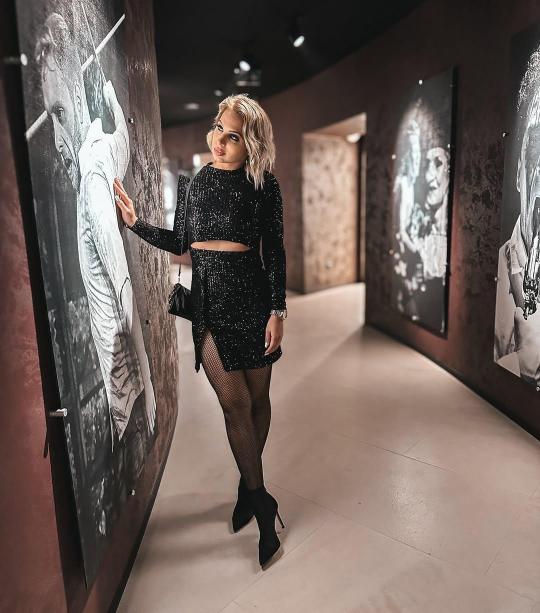

Adrienn Oláh
#celebrities in pantyhose#celebrities in nylon#celebrities in tights#blacknylons#blackpantyhose#celebrity legs#nylon pantyhose
2 notes
·
View notes
Text
Tökéletes Állat – Premieren a Csináltadmár Rabbival? első lemeze - Lángoló
„A Csináltad Már Rabbival? zenekar nevét úgy kell írni, hogy Csináltadmár Rabbival?, de mindig elbasszuk. Őszintétlen, vajpuha punkzenét játszunk, ami inkább posztnoise-sárgametál-ambient, de annak semmi értelme. Bármit tervezel, meg se próbáld, mert mi már túl vagyunk rajta. Nekünk már a kurva jövő is csak déja vu. A zenekar tagjairól annyit, hogy még sohasem sikerült megszámolni, hányan vagyunk, mert minden próbán mások az arcok, odajön valaki, belegitározik, a nevét sem tudom, aztán soha a büdös életbe nem jön többet. Nem csoda, hogy a borítóról lefelejtettük az énekest…
Én biztosan benne vagyok (basszusgitár, torok, szövegírás), Doki is (László Viktor, gitár, ének, zeneszerzés, masterolás, keverés, producálás), Szabó András Bálint is már többször járt felénk, Dula Sándor és bujdosó János meg néha. Utóbbiak gitárosok, előbbi dobos. Takács Nejlon Anna vokálozik, az egészen biztos, mert Polnauer Flóra előtt és Miczura Mónika után ő volt az énekesnő. Járt még arra Pálinkás Juan János (ének), Kerényi Nemimre Ákos (dob), Oláh Szabolcs (szintén gitáros), és nyilván valakit megint kifelejtek, de reménytelen az egész a nyüzsgés miatt. Azt kívánod majd, hogy bárcsak halnál meg, de nem fogsz. Gyáva féreg vagy, és azt kapod, amit megérdemelsz.

Elmaradt, baszom
2 notes
·
View notes
Text
youtube
László Lajtha (1892-1963) - String Quartet Nº 1 Op. 5 (1923) Double Fugue and Rondo
Auer String Quartet :
Vilmos Oláh (Violin) Gábor Berán (Violin) Csaba Gálfi (Viola) Ákos Takács (Violoncello)
3 notes
·
View notes
Text
Відкритий лист українському народу (nyílt levél az ukrán népnek)
Ми, громадяни Угорщини та підписанти цього листа, стикаючись із дедалі ганебнішою антиукраїнською пропагандою уряду Орбана, висловлюємо солідарність з українським народом і вшановуємо воїнів Збройних сил України, які героїчно захищають свою Батьківщину.
Ми декларуємо: існує й інша Угорщина — та, яка не прагне зиску шляхом зради чи служіння чужим інтересам.
Ми беззастережно засуджуємо російську військову агресію, що триває з 2014 року і у 2022-му переросла у повномасштабне вторгнення. Ми категорично відкидаємо будь-які спроби поставити під сумнів територіальну цілісність України чи насильницьке втручання у її внутрішні справи.
Як спадкоємці угорської революції 1956 року, ми високо цінуємо ту службу, яку сьогодні виконує Україна — як для нас, угорців, так і для всієї Європи — стримуючи імперіалістичну експансію Росії. Ми прагнемо надавати всю можливу гуманітарну допомогу жертвам війни, які шукають прихистку в нашій країні.
Ми прагнемо, щоб якнайшвидше припинилося збройне насильство, щоб було розпочато мирні переговори й укладено угоду, яка забезпечить тривалий мир, надійні гарантії безпеки, справедливе відшкодування збитків і притягнення до відповідальності винних у воєнних злочинах. Ми також бажаємо якнайшвидшого початку відбудови України. Європейські народи повинні зробити все можливе, аби подібна війна ніколи більше не повторилася на нашому континенті.
Це — наш життєво важливий інтерес: щоб держава, з якою ми сусідимо, не стала васалом путінської Росії, а залишалася незалежною демократією, у якій усі громадяни, включно з національними меншинами, можуть вільно користуватися своїми правами.
Ми публікуємо цей лист із надією, що угорська меншина в Україні, багато представників якої віддали своє життя за свободу України, не стане жертвою ганебної, політично вмотивованої риторики угорського уряду. Ми сподіваємося, що український народ і його лідери не ставитимуть під сумнів їхню лояльність, а визнають і вшанують їхню жертву.
Підписанти: Beck Zoltán, Bod Péter Ákos, Dénes Gábor, Elek István, Ferenczi Attila, Fleck Zoltán, Fodor Tamás, Gerzson János, Herényi Károly, Hetényi Zsuzsa, Hodosán Róza, Horgas Péter, Iványi Gábor, Jeszenszky Géza, Kajdi József, Karsai Péter, Kincses Gyula, Kis János, Kiss Gergő, L. Ritók Nóra, Lakatos György, Láng Balázs, Lányi András, Lázár Júlia, Ludassy Mária, Magyar Bálint, Magyar Fruzsina, Molnár Áron, Noszkai Gábor, Nyerges Tibor, Oláh József, Perlaki-Borsos Noel, Polyák Gábor, Pottyondy Edina, Puzsér Róbert, Pálinkás József, Remport Katalin, Roszík Gábor, Spányik András, Stark Tamás, Stefano Bottoni, Sz. Bíró Zoltán, Szent-Iványi István, Szepesházi Péter, Szél Bernadett, Törzsök Erika, Ungváry Krisztián, Vágó Csaba, Várkonyi Tibor, Vörös Imre
Чому це важливо?
Покажімо одне одному, народові України — включно з угорцями Закарпаття — та всьому світу, що справжня Угорщина стоїть на боці справедливого миру, солідарності та демократії. Ми не забуваємо про своїх співвітчизників і про тих, хто віддав життя за свою Батьківщину та за свободу!
___
forrás: https://szabad.ahang.hu/petitions/level-az-ukran-nepnek-1
1 note
·
View note
Text
Family is an essential part of society as it is the first agent of human socialization. An individual’s status, education, and upbringing depend on their family. However, the structure and the purpose of the family alter with time due to economic and social changes. These alterations are likely to provoke the question of whether family still is a formative factor in human life. However, despite all the significant changes, the family has a central meaning for people. Changes in Modern Family Nowadays, families face great change as their members embrace new roles and responsibilities. Since gender roles in society become different, it causes an interchange of functions that previously used to be known as strictly male or female. For example, nowadays, women are possibly to be family providers, and men are expected to be more involved in domestic responsibilities (Oláh et al., 2018). There is a change in the perception of marriage and family as well. It is not considered a necessity anymore, so many people prefer to postpone creating a family or reject the idea of marriage at all. Digitalization of Communication Another significant change in the life of the modern family is the digitalization of communication, as it changes family dynamics and relationships. One of the contributing factors to this change was the Covid-19 pandemic. The digitalization of social connections greatly affects the behavior of family members (Schneider & Kreyenfeld, 2021). However, a detailed study of the influence it has on families is yet to be written. Importance of the Family Despite new dynamics in modern families, the meaning of family for a person stays the same. A family is a place where an individual learns social skills and practices emotional intelligence. It offers material and emotional support and regulates the behavior of family members (Candelario, 2021). In other words, for many people, it is a source of protection and support they count on in their lives. Conclusion Family as a social institution changes with the course of time. Social changes broaden the roles of men and women in the family. The understanding of the purpose of marriage is changing nowadays as well. Digitalization of social interactions leads to different dynamics in family relationships. Still, the family remains the most important community where people are able to satisfy their material and emotional needs. References Candelario, S.V. (2021). Family organizational basics: leadership, communication, environment, and culture. Cambridge Scholars Publishing. Oláh, L., Kotowska, I.E., & Richter, R. (2018). The new roles of men and women and implications for families and societies. In G. Doblhammer & J. Guma (Eds.), A Demographic Perspective on Gender, Family and Health in Europe (pp.41-65). Springer Open. Web. Schneider, N.F. & Kreyenfeld, M. (2021). Research handbook on the sociology of the family. Edward Elgar Publishing. Read the full article
0 notes
